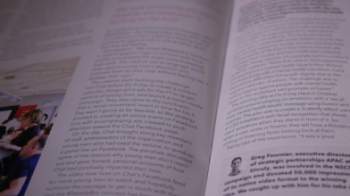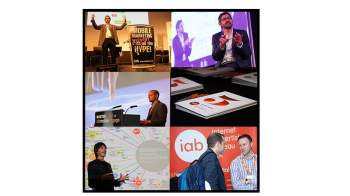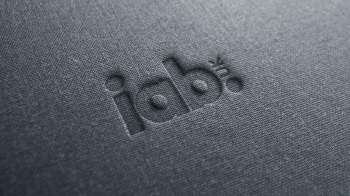The IAB's open letter to digital critics
James Chandler
Newsline columnist Bob Wootton, alongside other commentators, has lately been highly critical of online advertising. Here, the IAB's CMO James Chandler confronts the barrage of digital criticism.
Dear Bob,
I read with interest your piece ‘Nothing forces reflection like lost business’ this week. Thank you for the reference to our blog (which by the way, I thought was rather good) - just sorry you didn’t share our view that digital isn’t quite the dystopian advertising nightmare some might believe it to be.
Nonetheless, your article prompted me to reply and add some colour to the points you raise.
*drum roll* digital actually works
I had the pleasure of hosting a panel with our friends at the IPA earlier in the summer which showcased the brilliant Economist ‘Raising eyebrows and subscriptions’ campaign. Provocative, well crafted storytelling that created 64,000 paid subscriptions and delivered £25 of revenue for every £1 invested. And all this from a humble banner campaign. When done well (like any media channel) - i.e. creative messaging and intelligent placements - digital delivers; even in its most simplest form.
Adding to this brilliant work by The Economist, is evidence from our own research conducted with AIMIA, I2C and MTM using Nectar card sales data that showed the impact that exposure to digital advertising had on offline sales. On average across five Unilever brands - Nescafe, Magnum, Haagen Dazs, Maille Mustard and Persil - each £1 spent on programmatic display generated £1.47 in sales in Sainsbury's, a figure that would be even higher if sales in other supermarkets were also factored in.
This is in addition to driving up brand metrics - for example, an increase of +45% in ‘this brand is for people like me’ across the brands measured. The results and their impact on Unilever’s approach to digital display are reported here.
The V word
Might I suggest that rather than a lack a rigour in the online space, perhaps the fact that there are a countless number of different viewability standards, might be adding to the confusion. After all, if I’m media owner Z, whose standard should I adopt? Or should I try and satisfy as many parties as possible by adopting several? Even within the same advertiser, multiple viewability standards for different regions have been known to exist. You can see the dilemma.
What’s more, somewhere along the line, viewability seems to have got mixed up with effectiveness. Whether or not a human saw an ad, or indeed had an opportunity to see one, is clearly not the same as determining whether or not the ad actually succeeded in doing what you intended it to do.
Finger pointing and open letters
Sadly, the truth here is far less salacious than your assertions. It’s also common knowledge amongst agencies and I expect a good number of savvy advertisers.
Google has worked with comScore to provide data so that YouTube can be effectively measured on UKOM, and Google Double Click Exchange is JICWEBS registered and DTSG certified. This is publicly available information and shows Google adhering to industry standards set by the IPA, ISBA, AOP and IAB.
Facebook is actively engaged with industry JICs about how it can facilitate more accurate measurement, particularly of mobile video.
Do we wish this was already delivered? Yes, of course - but between them, these ‘tech behemoths’ are making progress and embracing the responsibility they have in setting the example on what ‘good digital’ looks like.
It’s worth remembering that progress doesn’t always take place in the gaze of the public eye or get documented in column inches of the trade press, nor should we expect it to.
Automated, not programmatic
I wonder if it’s useful to stop using programmatic as the bogeyman for all the evils digital supposedly beholds? After all, it seems that automated trading - what I find most people mean when they say ‘programmatic’ - is the future of all media channels, be that OOH, TV, radio or print.
Only this week on the BBC’s News at Ten was Thinkbox’s Lindsey Clay confirming that: ‘the internet is the future of TV’.
Digital’s impact isn’t just on how telly is now consumed, but how it will be planned, bought and delivered.
The future’s bright, the future’s digital
There are lots of reasons to be cheerful. With UK advertisers investing more than ever before in digital (over £10bn according to our 2016 Digital Adspend study), it’s clear that they do trust and understand how digital delivers on their marketing objectives.
In October, more than 1,500 of the smartest people in our industry will gather at The Barbican for Engage 2017 to celebrate what’s great about digital advertising. Over half of that audience will be made up of UK advertisers.
Of course, there is work to do and as an organisation set up to represent digital advertising we’re are not immune to criticism. But, it’s all too easy to stand at a distance shouting vague, emotive things about the woes of digital and how it’s not working for brands. The IAB’s role as I see it six months into the job, is to bring together everyone with an interest in digital to achieve things they couldn’t do on their own.
I would love for you to be a part of this Bob, so I have reserved you a seat at the Barbican in October to enjoy all that Engage has to offer, as our guest. I hope you’ll join us - not just in October, but going forward to help make a sustainable future for digital advertising that works for everyone.
James,
James Chandler
CMO, IAB UK
Related content
Debate & diversity are both essential to make the ad industry better
Learn moreQuick Q&A - Brand Safety
Learn moreIAB UK bids farewell to flagship Mobile Engage event
Learn moreDigital Adspend
Learn more
Fast forward to 2030 with Futurescape
An in-depth exploration of the attitudes, innovations and media shifts that will shape the years ahead and redefine how we advertise by the turn of the decade



